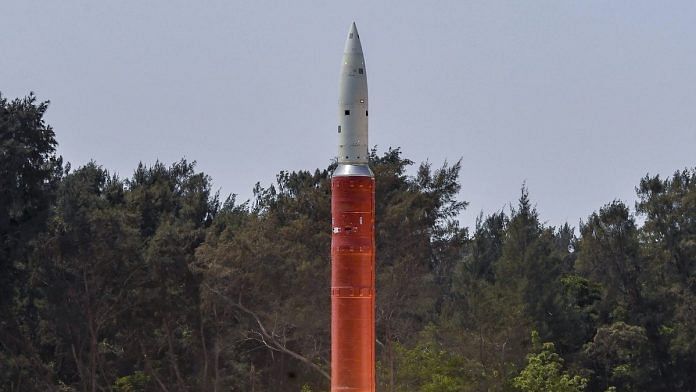New Delhi: Days after India successfully conducted an anti-satellite missile test (A-SAT), joining an elite league of four nations to have this capability, a controversy has now broken out over a missile trial that the country had carried out on 12 February.
In a report published on 30 March, The Diplomat, an online magazine based out of Tokyo, has claimed that the test India had conducted on 12 February was an A-SAT one that had failed within 30 seconds.
The report, quoting US government sources, claimed this was, in fact, India’s first attempt to destroy a satellite in low-earth orbit. To buttress its claim, the report states that India had issued a Notice to Airmen (NOTAM) directive, between 10 February and 12 February, demarcating “a restriction zone off the eastern coast of India that matches the restriction zone described in another NOTAM” ahead of 27 March, when India successfully carried out the A-SAT test.
Top sources in the Defence Research and Development Organisation (DRDO) and the government, however, told ThePrint that the activity in February was one of a Ballistic Missile Defence (BMD) test, which they add was successful.
They referred to media reports in February that had provided details of the test.
“The test conducted on 12 February was a BMD one and it was successful. It was not an A-SAT test,” a top DRDO source told ThePrint. “The target was electronic but the missile used was a real one and hence NOTAM was issued like in all other tests, where an actual missile is fired.”
The BMD is an indigenously developed missile capable of destroying enemy weapons at high altitude.
Also read: NASA is not the final word on space debris from A-SAT, says former DRDO chief Saraswat
More tests in the offing
Sources in the DRDO told ThePrint that more such BMD tests would be conducted in the coming months as the organisation is working on two-layered aerial protection for major cities and vital installations against incoming ballistic missiles.
India’s BMD arsenal consists of a Prithvi Air Defence (PAD) missile to take out incoming missiles at a range of about 80 km in altitude and an Advanced Air Defence (AAD) missile for altitudes of 15-25 km.
In 2017, India had tested a new exo-atmospheric interceptor missile named the Prithvi Defence Vehicle (PDV), which is believed to have intercepted a missile at an altitude of 100 km during trials.
Also read: NASA slams A-SAT test for leaving debris in space, increasing risk factor for space station



